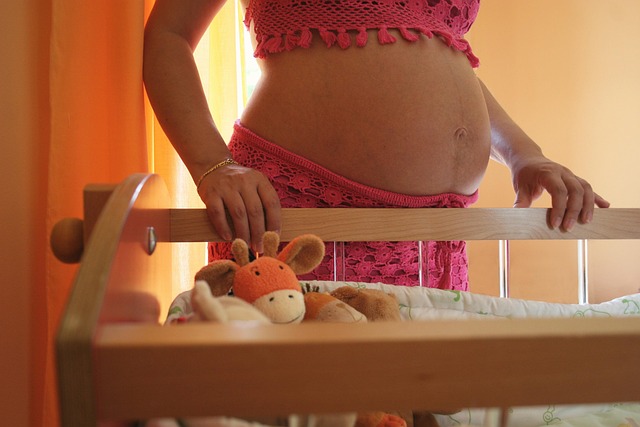In today’s economy, finding quality and affordable child care is a daunting challenge for many families in the U.S. According to American Progress, nearly 50% of Americans reside in areas identified as child care deserts. A child care desert is defined as a census tract containing more than 50 children under the age of five, yet having either no licensed child care providers or so few that there are over three times as many children as available slots.
This issue is not merely a statistic; it resonates deeply with parents. A national survey conducted by The Washington Post in 2015 revealed that over 75% of mothers and 50% of fathers have altered their work lives—whether by declining job offers, changing jobs, or even quitting—due to inadequate access to paid leave or reliable child care. Additionally, American Progress highlights that most parents face limited realistic options for child care.
The shortage of quality, affordable, licensed daycare is alarming. Data from the U.S. Census indicates that one-third of children under five are in some form of non-relative care, a concerning reality in a system that is often fragmented and insufficient. As reported by The New Republic, the situation can seem almost Dickensian. Parents are eager to provide the best for their children, but often find themselves without access to the quality care they need.
Affordability is a significant barrier. According to Money, the average American family allocates about 10% of their income to child care. The Department of Health and Human Services considers 7% to be affordable, a benchmark only met by Louisiana, thanks to substantial tax incentives. A poll from Care.com revealed that some families are spending as much as 25% of their income on child care. For instance, one mother shared that her monthly child care expenses for her infant and four-year-old daughter run between $2,800 and $3,000. For families with two children, like those aged four and eight, child care expenses can often surpass rent, as noted by the Center for the Study of Child Care Employment at Berkeley (CSCCE). For minimum wage earners, the situation is even bleaker; in South Dakota, infant care can consume 31.8% of income, while in Washington, D.C., it can reach an astounding 103.6%.
To remedy these issues, tax breaks are essential. Louisiana’s School Readiness tax credits—which allocate $16 million annually for early childhood education—are a great example of how financial support can help families. Furthermore, proposals such as capping child care expenses at 10% of income, as previously suggested by political leaders, would provide much-needed relief to low-income families. The CSCCE also advocates for employer-sponsored dependent care flexible spending accounts that would allow employees to exclude up to $5,000 of their salary from taxes.
Quality is another pressing concern. The National Institute of Child Health and Human Development reports that only 10% of daycare centers are rated as excellent. Many programs fall short, receiving ratings of “fair” or “poor.” Given the critical importance of early childhood experiences in shaping a child’s future success, this issue cannot be overlooked. However, with child care workers earning a median annual salary of just $19,430 as of 2011—less than that of parking lot attendants or janitors—it’s no wonder that attracting and retaining quality staff is a challenge. Nearly half of these workers rely on public assistance to make ends meet, which inevitably affects the care they can provide.
As licensed daycare becomes prohibitively expensive and child care deserts proliferate, many families resort to unlicensed care. Research from the Childcare Block Development Grant indicates that 15% of low-income children in such programs are in unlicensed settings. Unfortunately, these providers often lack necessary training and oversight, leading to significant safety risks. Tragically, in Virginia alone, 46 children died in unlicensed care facilities from 2014 to 2017. Reports reveal that the infant mortality rate in home settings is seven times higher than in regulated daycare centers.
However, it doesn’t have to be this way. Countries like France have implemented successful state-sponsored daycare systems, known as crèches, that are part of the public health system. These facilities operate during standard work hours and feature a sliding-scale fee structure. Notably, at least half of the staff must hold specialized college degrees in early childhood education, and medical professionals, including pediatricians and child psychologists, are available on site. In France, approximately 80% of mothers participate in the workforce, compared to just 64.7% of American mothers with children under six—this number drops even lower in child care deserts.
Comprehensive daycare reform is urgently needed in the U.S. We must create more safe, inspected, trained, and licensed child care options that are affordable for families, particularly for those who are low-income. Government subsidies can play a crucial role in achieving this goal. Ultimately, what American children deserve is a system similar to that of France, with well-trained staff, medical professionals on call, and a sliding-scale fee structure. Expanding access to quality care in underserved communities is vital for allowing parents to return to work and ensuring that those already working can afford reliable child care. While the path forward may be challenging, establishing more affordable, licensed centers in areas of need would be a significant first step.
For more insights on family planning, check out our post on fertility boosters for men here. Also, for comprehensive information on pregnancy week by week, visit this excellent resource here. To learn more about child care and its impact, you can refer to this authoritative source.
Summary
The search for quality and affordable child care in the U.S. reveals a systemic crisis, with many families living in child care deserts. With limited options and high costs, parents are struggling to find suitable care for their children. Tax breaks, employer-sponsored accounts, and improved quality standards are essential reforms needed to create a more equitable child care system. By learning from successful models abroad, we can aim to build a future where every child has access to the care they deserve.
